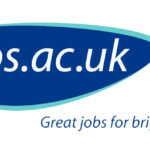Machine Learning Approaches to Cross-modal Information Fusion in Podiatric X-ray Imaging at University of Southampton
Job Description
Supervisory Team: Thomas Blumensath (ISVR), Alex Dickinson (Engineering Sciences)
Project description
Three dimensional images of the foot taken under loading conditions can provide a valuable clinical tool for the assessment of bone alignment related complaints. However, as these images have to be taken whilst a person is standing, specialised scanners are required to collect the image data. With limited availability of the required specialised equipment, most diagnostic decisions still have to be made based on traditional images, such as weightbearing two dimensional projective radiographic images or non-weightbearing three-dimensional X-ray computed tomography (CT) images, which can be generated with equipment readily available in most clinical settings.
This PhD project will explore the feasibility of combining information from several weightbearing two-dimensional projective X-ray images with non-weightbearing three-dimensional tomographic data to extract the clinically salient diagnostic information. Working closely with orthopaedic surgeons, the project is anticipated to use both simulated as well as real X-ray image data in order to develop advanced image processing and computer vision algorithms to combine information from the two modalities. Utilising the latest advances in machine learning, the project aims to overcome two fundamental challenges, 1) the identification of the unknown alignment of the two-dimensional projective x-ray images relative to the X-ray imaging system and 2) the identification of key anatomical landmarks in each of the images that will allow for the precise alignment of the different anatomical structures in each of the imaging conditions.
Potential funding to support this position will be available to the strongest candidates through the Faculty of Engineering and Physical Sciences graduate school studentship programme, which are awarded on a competitive basis.
If you wish to discuss any details of the project informally, please contact Professor Thomas Blumensath, µ-VIS X-ray imaging centre, Email: Thomas.blumensath@soton.ac.uk, Tel: +44 (0) 2380 59 3224.
Entry Requirements
A very good undergraduate degree (at least a UK 2:1 honours degree, or its international equivalent).
Closing Date: 31 August 2024. Applications will be considered in the order that they are received, the position will be considered filled when a suitable candidate has been identified.
Funding: Funding for tuition fees and a living stipend are available on a competitive basis. Funding will be awarded on a rolling basis, so apply early for the best opportunity to be considered.
How To Apply
Apply online: Search for a Postgraduate Programme of Study (soton.ac.uk). Select programme type (Research), 2024/25, Faculty of Engineering and Physical Sciences, next page select “PhD Engineering & Environment (Full time)”. In Section 2 of the application form you should insert the name of the supervisor Thomas Blumensath
Applications should include:
Curriculum Vitae
Two reference letters
Degree Transcripts/Certificates to date
For further information please contact: feps-pgr-apply@soton.ac.uk
The School of Engineering is committed to promoting equality, diversity inclusivity as demonstrated by our Athena SWAN award. We welcome all applicants regardless of their gender, ethnicity, disability, sexual orientation or age, and will give full consideration to applicants seeking flexible working patterns and those who have taken a career break. The University has a generous maternity policy, onsite childcare facilities, and offers a range of benefits to help ensure employees’ well-being and work-life balance. The University of Southampton is committed to sustainability and has been awarded the Platinum EcoAward.

